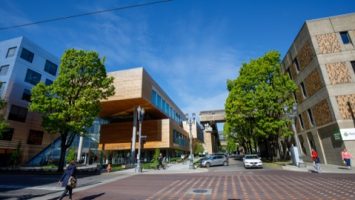
The city of Columbus, Ohio recently launched the Smart Columbus Operating System that will gather data for its smart city transportation project. The system has the potential to reduce collisions, speed first responder response times, curb freeway delays, and get products to consumers faster.
Columbus Mayor Andrew Ginther said launching the Smart Columbus Operating System is a major milestone on Columbus’ smart city journey, but the ultimate goal is to make life better.
“Fundamental to ‘becoming smart’ as a city is discovering how to use data to improve city services and quality of life for residents,” Ginther said. “When we apply data to the challenges we experience as a city, we can transform outcomes in education, employment, health care and even access to healthy food.”
The city’s Smart Columbus team will manage and distribute over 1,000 mobility-related data sets through the new operating platform to government offices and private companies. Much of the data contains geographic information like the location of bridges, county boundaries, and zoning districts, but there is also data on topics such as food deserts and infant birth weight. The collected information will help the city integrate self-driving cars, connected vehicles, smart sensors, and other developing transportation technologies into its infrastructure.
Users can navigate the open-source data by searching by keyword or filtering by tag, file format, or organization. Data can be viewed online or downloaded in a number of formats. The website is built on open source code, which means other cities can leverage the code for their own data management platforms.
“Our next challenge will be to build the ecosystem for developing solutions that we can progress from idea, to testing and ultimately production,” said Ben Blanquera, the vice president of delivery and experience for the Columbus Collaboratory and co-leader of the team that developed the operating system.
The project is supported by a $40 million federal grant and $10 million from investor Paul Allen’s Vulcan Inc.


